Do we really care about our lungs? Can we improve lung capacity? Do we exercise them? Well, most of us do not. We take breathing for granted, and thus, the functioning of lungs also become taken for granted. Practicing deep yoga breathing could not only detoxify our lungs, but also improve lung capacity. It is ideal for everyone to practice these yoga poses and Mudras and Pranayama, but if you are experiencing any breathing disorders, please do check with your doctor first.
Asana, Pranayama and Mudra to Improve Lung Capacity
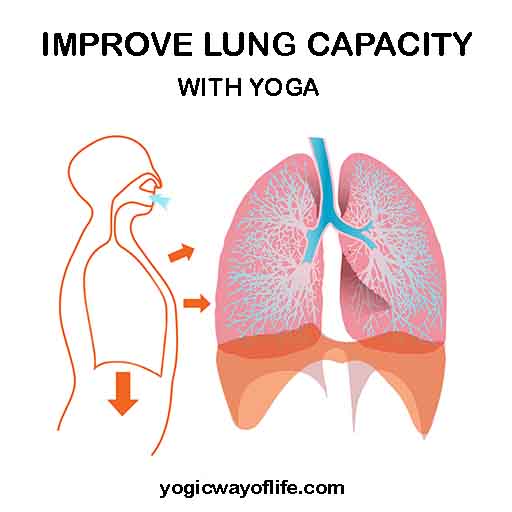
1. Dirgha Pranayama – Three Part Breathing
Dirgha Pranayama, known as the three-part breathing technique, is an active breathing technique to improve lung capacity. The breathing is split into three. The air fills up the lower belly, chest, and then the bottom region of the throat during the inhalation. As we exhale, we expel the air in the reverse order, with the breath leaving the belly at the end. Since it is a slow, deep breathing, it fills up the lungs, allowing them to expand.
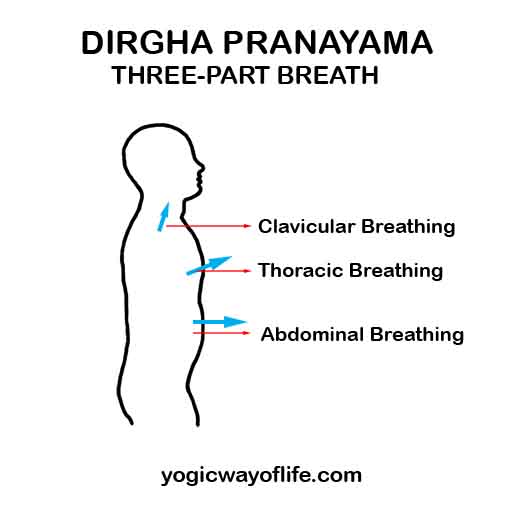
Sit down in a comfortable seated position. Keep the spine erect and neutral. Roll the shoulders down and away from the ears. Close your eyes and relax your body. Take seven to nine normal breaths to prepare yourself for the practice.
Now take a slow, deep inhalation through your nose. As you inhale, allow the expansion of the entire abdomen to happen in three parts – the lower abdomen, chest, and finally the epiglottis (the lower portion of the throat). Allow each of the parts to expand as air fills the space. Keep the breath smooth and continuous. Once the entire abdominal area fills up with air, start exhaling gently through the nose. Allow the air to leave the epiglottis first, followed by the chest, and finally the lower belly.
Continue the practice seven to ten times initially, slowly deepening the inhalations and exhalations with time.
2. Nadi Sodhana Pranayama – Alternate Nostril Breathing
Nadi Sodhana Pranayama involves Kumbhaka, retention of breath after inhalation and suspension of breath after exhalation. Retention of breath helps to improve lung capacity. According to classic texts, the ratio of the entire breathing practice is 1:4:2, with 1 = 12 seconds. That is, 12 seconds for inhalation, 48 seconds for holding the breath and 24 seconds for exhalation. However, it is not advisable to experiment with such deep breathing practices in the beginning. Hence for practical purposes, we should start with lower ratios like 1:1, 1:2, 1:2:1, 1:2:2 and then finally 1:4:2. Advanced practitioners can even experiment with holding of breath after exhalation. Then the ratios will look like 1:4:2:1, 1:4:2:2, 1:4:4:2, etc. But these should be strictly practiced under the guidance of a yoga instructor.
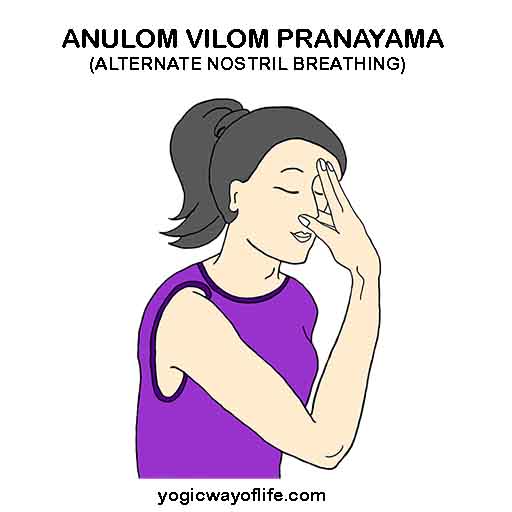
You may practice 5 to 20 rounds of this pranayama. For example, if you are comfortable with ratio of 1:1:1 with 1 = 4 seconds, then start with the left nostril. Inhale 4 seconds from left nostril, hold breath for 4 seconds and then exhale from the right nostril for 4 seconds. This is only half the round. Immediately after that, inhale for 4 seconds from the right nostril, hold breath for 4 seconds and then exhale from left nostril for 4 seconds. This completes one round. This is one of the best practices to improve lung capacity. Progress to higher and more difficult ratios according to your comfort.
3. Ujjayi Pranayama – Victorious Breath
Ocean breathing, or Ujjayi Pranayama, is not just a restorative breathing practice. It is a deep breathing technique that could improve lung capacity. This breathing practice is known to be therapeutic for asthma and COPD.

Get into a comfortable seated pose. Roll the shoulders down and away from the ears, allowing them to relax completely. Rest the palms on your thighs, palms facing up. Shape them into Jnana mudra, allowing the tips of the index and thumb to be in contact. Take seven normal breaths to prepare yourself for the deep breathing practice.
Now, gently contract your throat and take a deep, long breath through your nose. Exhale slowly through the nose, while creating an Aah sound. Relax your throat. Practice this 15 times. Once you master the practice, try constricting your throat as you inhale and exhale. Maintaining the contractions helps to deepen the practice and fetch deeper benefits.
4. Cat Cow Breathing
It is a simple, chest opening breathing practice that releases any strain from the area, allowing lungs to function better and improve lung capacity.
Come on all your fours, stacking your hips over the knees. Spread your knees as wide as your hips. Adjust your alignment to bring your shoulders, elbows, and wrists in a straight line. Spread the fingers wide and press your palms into the floor.

Inhale, scoop your back, roll open your shoulders, expand your abdomen muscles, squeeze your buttocks, and gaze up. Hold the pose for a count of 10, rolling the shoulder back to open the chest more. Exhale, round your back, suck your abdomen to the spine, and tuck the chin to the chest to gaze down. Suspend the breath for a count of 10.
Practice 20 repetitions. Make the movements slow and smooth in a continuous flow to reap the benefits.
5. Trikonasana – Triangle Pose
Opening the chest to the sky allows better passage of air to the lungs by expanding the chest cavity. It is a great pose that could help creating more space and openness in the entire body, thereby improving lung capacity.
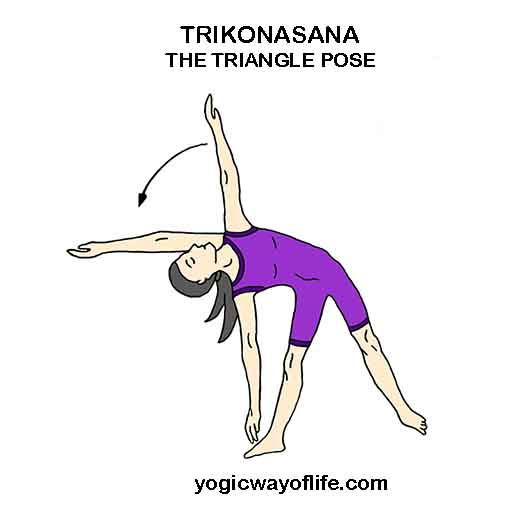
Stand with your feet slightly separated, spine straight, and arms on your outer thighs. Roll the shoulders back and away, creating space in the chest.
Inhale and place your right leg about three feet away from the left one. Turn the right foot out to your right. Slide your left foot slightly inward, making a 45-degree angle with the leg. Exhale completely. Breathing in, extend your arms at shoulder level, palms facing the floor. Lean your torso to your right. As you exhale, bend sideways to your right. Bring your right arm down. Let the right fingertips rest inside the right foot.
Roll your shoulders back and away from your ears, allowing the chest to open to the ceiling. Inhale and lift your left arm to the ceiling, stacking it above the right arm. Gaze up. Tuck the pelvis inward, engage the core muscles, and hold the posture for seven to nine deep breaths. Keep the legs and straight active by engaging the muscles of the buttocks and thighs.
Inhale and slowly come back to the center. Join the feet together to come back to the starting position. Repeat on the other side. This is a good yoga posture to improve lung capacity.
6. Chandrakala Mudra
Chandrakala is the Sanskrit word for Crescent Moon. This mudra could help detoxifying the lungs, thereby improving its functioning and capacity. It will improve lung capacity and helps to cleanse the large intestine, thus lifting away unwanted pressure on the lungs. The mudra is also beneficial to clear any phlegm collected during cold and flu. It is also known to be therapeutic for people under the clutches of asthma
You can practice the Chandrakala mudra daily for 10 to 15 minutes either in the morning or evening.
Sit down in a comfortable seated position. Relax your body. Keep spine straight and aligned with the neck and head. Take seven to nine normal breaths to prepare yourself for the practice. Lean against a wall if you cannot sit erect for 10 to 15 minutes.
Once you are ready, lift your left hand. Extend your index finger to the ceiling. Stretch out your thumb towards you. Make sure that the fingers are perpendicular to each other. Bend all the other fingers and allow them to rest inside the palm. Hold for 10 to 15 minutes.
7. Shavasana – Corpse Pose
Shavasana is the best pose to practice deep abdominal breathing and to improve lung capacity. It is refreshing and restful. It calms your nervous system and cleanses the entire abdominal area, allowing the lungs to function right. It also helps to create a sense of conscious breathing.
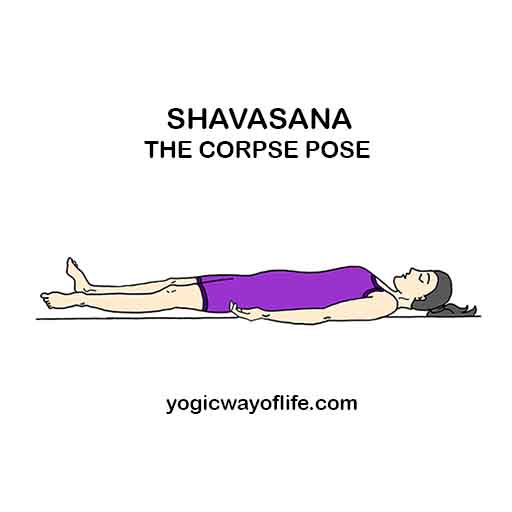
Lie down on your back, separating your legs wider than your hips. Allow the feet fall naturally away from your body towards the floor. Stretch your hands away from the body, palms facing the ceiling, leaving enough space for armpits to breathe. Let your body relax. Close your eyes and breathe through your nose.
Rest one hand on your upper chest and the other over your navel area. Take a couple of normal breaths. Now deepen the breathing. Take slow, gentle, yet deep inhalations. Allow the belly to expand and rise with each breath you take in.
Exhale slowly, releasing the air you filled up during your inhalation. Let the tummy fall down and close to the spine as you exhale and release. Remember, the goal is to relax and allow the chest to expand so that toxins, if any, can be eliminated from the lungs. The practice, if done right, could also stimulate the expulsion of carbon dioxide accumulated due to excess stress.
Continue doing this for about 5 to 10 minutes.
Once you feel you are ready, release the hands and restore normal breathing. Notice the differences. Continue to be in this state for the next three minutes.
It is advisable to practice yoga regularly to see noticeable changes. With regular practice, your lung capacity could improve drastically, enabling you better quality of life.
Try these yogic practices in your daily life to improve lung capacity.
